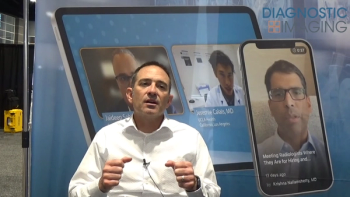
Radiology department rolls its own IT support
Today's radiology departments are beset by swarms of information systems from PACS to RIS to acquisition modalities, dictation systems, and individual workstations. Each demands particular technical attention. "Tracking issues that affect clinical
Today's radiology departments are beset by swarms of information systems from PACS to RIS to acquisition modalities, dictation systems, and individual workstations. Each demands particular technical attention.
"Tracking issues that affect clinical operations and resolving them in a reasonable period is an important function of any organization. But radiology departments have very limited resources available to provide this support," said Dr. Paul Nagy, an assistant professor of radiology at Medical College of Wisconsin.
Commercial problem tracking systems designed to track software bugs or support manned central help desks are available. But when Nagy couldn't find one to customize for his own needs, he built Radtracker. The Web-based tool allows anyone in the enterprise to easily submit reports describing and prioritizing support issues pertaining to specific information system components.
The system is offered as a free, open source tool to allow other departments to customize it to their needs when necessary. So far, the package, available at http://prdownloads.sourceforge.net/radtracker/radtracker.tar.gz has been downloaded over 300 times. (PACSPulse, Nagy's open source PACS monitoring tool, is also available free at http://sourceforge.net/projects/pacspulse.)
"Radiology departments need to keep track of what they're doing by thinking more like an information services company," Nagy said.
Radtracker provides the triage tool necessary to manage service issues, depending on the size of the department. Nagy doesn't recommend Radtracker for large institutions that have staffed service desks, but he believes small sites that perform under 150,000 studies a year could benefit from the system.
Every incident submitted to Radtracker automatically generates an e-mail to the appropriate support person. If the incident is deemed high priority, notification goes directly to the pagers of the people who support that system to facilitate immediate response.
Nagy said some type of issue tracking tool should be considered a requirement to running the information systems of radiology in a professional manner.
"One of the reasons we developed Radtracker is because I don't think hospitals really understand mission-critical applications," he said. "If your lab system goes down, you can always just call them to get the results over the phone. The same is true with some of the other information systems. But if your PACS goes down, you don't want to take a ticket out - you want to have all hands on deck."
Newsletter
Stay at the forefront of radiology with the Diagnostic Imaging newsletter, delivering the latest news, clinical insights, and imaging advancements for today’s radiologists.




























